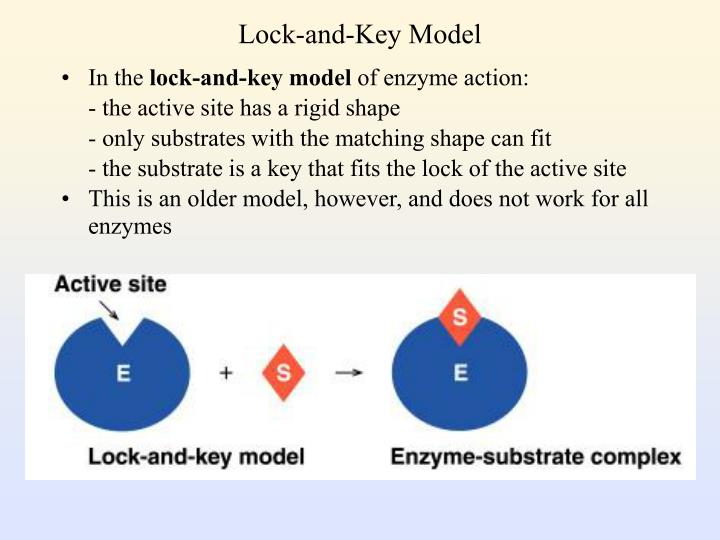Lock And Key 3D Model Enzymes. The lock and key model for enzyme activity is wrong because it does not account for the intermediate shape of the substrate. This means that enzymes specifically react with only one or a very few similar compounds.

To catalyse a reaction, enzyme molecule and substrate molecule need to meet and joint together by a temporary bond. Therefore, it is also called fisher’s theory. The lock and key model theory first postulated by emil fischer in 1894 shows the high specificity of enzymes.
The Lock And Key Model Assumes That The Active Site Of The Enzyme And The Substrate Are Equal Shaped.
Explain the lock and key model. In this analogy, the lock is the enzyme and the key is the substrate. It supposes that the substrate fits perfectly into the active site of the enzyme.
The Two Models To Explain The Actions Of Enzymes With Substrates Are The Lock And Key Model & Induced Fit Model.
It states that only the correct key will fit in the active site on an enzyme for a reaction to take place. It describes how the enzyme’s active site has a very unique shape that complements the shape of a specific substrate. Similar to how a key has to be the correct one for a lock, no reaction takes place if an incorrect substrate tries to bind.
A Substrate Is Drawn Into The Active Sites Of The Enzyme.
The lock and key model for enzyme activity is wrong because it does not account for the intermediate shape of the substrate. The substrate molecule fits into the active site of the enzyme molecule like a key fitting into a. According to the lock and key model, the active site of the enzymes serves as the ‘lock’ while its substrate serves as the ‘key’.
In This First Metabolic Action The Enzyme Will Act On The Substrate To Break It Apart.
The outcome of the reaction / what is produced, speeds up the reaction, specific region of the enzyme which binds with the substrate, the reactants of the reaction, the fit is precise between the active site and enzyme, similar to a. The lock and key model theory first postulated by emil fischer in 1894 shows the high specificity of enzymes. The preference of an enzyme for given substrates is attributed to the quality of the match between enzyme active site and transition states of individual substrates.
3D Model Of Enzyme Substrate Complex.
Construct a 3d model of enzyme substrate complex with the enzymes in action kit your students will first use foam pieces to identify the enzyme and substrate and model how they might interact. It was proposed based on the. What does the lock and key model of enzyme substrate interaction illustrate?
0 Comments